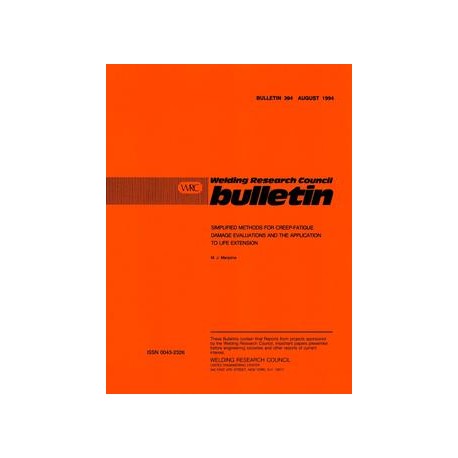Cart 0 Product Products (empty)
No products
To be determined Shipping
$0.00 Total
Product successfully added to your shopping cart
Quantity
Total
There are 0 items in your cart. There is 1 item in your cart.
Total products
Total shipping To be determined
Total
New Reduced price!  View larger
View larger
 View larger
View larger WRC 394
M00000643
New product
WRC 394 Simplified Methods For Creep-Fatigue Damage Evaluations And The Application To Life Extension
Bulletin / Circular by Welding Research Council, 1994
M. J. Manjoine
In stock
More info
Full Description
A simplified method for creep-fatigue damage evaluations is presented. The material requirements include the standard tensile, creep-rupture and fatigue data over temperature ranges and special creep-fatigue test data. From the average data of these tests the average cyclic constitutive relationships are determined without any reduction factors. These constitutive equations are used in the analyses of the design loadings to obtain the hysteresis loops of transients and the stress-strain history of operation. The fatigue damages of transients, e.g., startup and shutdown, are evaluated from the maximum inelastic strains of the hysteresis loops after one hour of the peak transient stress relaxation. The creep damages of transients are evaluated from the unrecovered inelastic strains of the hysteresis loops and the remaining operating stress and strain histories. The fatigue and creep damages are combined by the vector sum. Reduction factors are then applied to determine the design or residual lives.This simplified method captures the damage mechanisms of published creep-fatigue tests and has been successfully used in the design of ultra-high temperature components.

